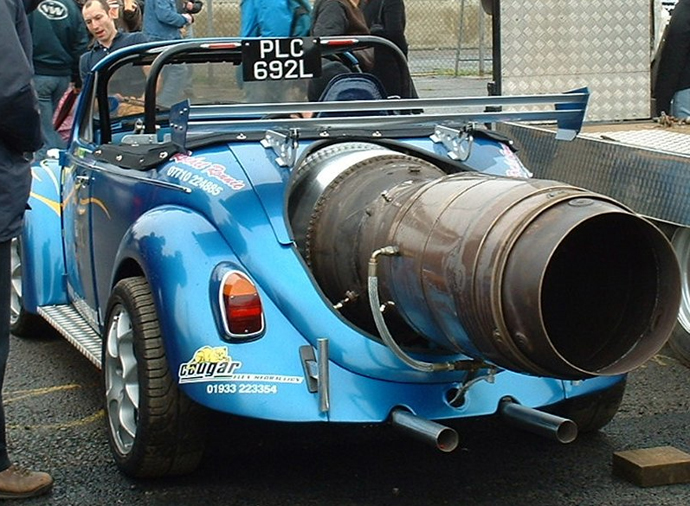In what is seemingly an unending discussion on how to register older cars, the DVLA is now questioning whether cars that are in any way modified from their original specification can still be classified as an historic vehicle…
It seems classic car owners have been randomly targeted by the DVLA to receive correspondence asking them to provide evidence of their vehicle’s history to substantiate its classification. It’s all to do with ‘originality’ and potentially if your vehicle has been substantially modified and the DVLA don’t recognise it as being original enough, you might be in for a spot of bother.

The upshot is – in the very worst scenario if they think it’s ‘non standard’ – your prized VW might need to be re-registered with a ‘Q’ plate, seriously affecting its value and provenance in the process. Needless to say it’s caused uproar among the classic car fraternity, with various associations making their feelings known to the DVLA.
Mind you, you will only need to show evidence that your car is indeed a classic if you receive a letter from the DVLA asking for information; if you don’t receive any such correspondence, then you don’t need to take any action.
Although the legislation is still very hazy it seems to retain your original plate you need to follow these guidelines:
Rebuilt Vehicles: You can keep its original registration number if you can prove you’ve used:
- The original unmodified chassis or body-shell
- A new chassis or monocoque body-shell of the ‘same specification’ as the original
You must also have 2 other major components from the original vehicle on the following list:
- Suspension (front and Back)
- Steering assembly
- Axles (both)
- Transmission
- Engine

Radically altered vehicles: Vehicles that have been altered from their original specification, but aren’t kit conversions. Here, keeping the original registration number is based on a point system. The more original the vehicle the higher you score deeming your vehicle acceptable to maintain its age related plate. However, you must have the original or new unmodified chassis and monocoque body-shell. 8 points or more allows you to keep your original plate.
- Chassis, monocoque body shell original or new and unmodified – 5 points
- Suspension (front and back) original – 2 points
- Axles (both) original – 2 points
- Transmission original – 2 points
- Steering assembly original – 2 points
- Engine original – 1 point
Reconstructed classic vehicles: the DVLA will only allocate an age-related plate if the vehicle meets the criteria below:
- Built from genuine period components from more than one vehicle, all over 25 years old and of the same specification as the original vehicle
- A true reflection of the marquee
- Has been inspected by the appropriate vehicle owners’ club for the vehicle type (marque) and confirmed in writing it has been inspected, is a true reflection of the marque and comprises of genuine period components all over 25 years old
- Disclose manufacturer dates for all major components
The DVLA will then assign an age related plate but not necessarily for the original year, it will be based on the age of the youngest component used.

As far as we can see, the legislation is intended to prevent high-value ‘replicas’ being passed off as originals. In other words, it’s been introduced to clarify which cars are genuine and which are lovely lookalikes but worth a lot less. However, you can’t help but think it might be the thin end of the wedge. There’s already legislation proposed regarding MoTs; cars over 30 years old will possibly be exempt from testing if they haven’t had substantial changes made to them. How you define ‘substantial changes’, though, is anyone’s guess. But who knows, cars that do have to have an MoT might one day be tested more thoroughly, with any modifications to the brakes, suspension or engine having to be noted. This in turn could lead to the recommendation that it is re-issued with a Q plate and perhaps made to undergo a more thorough inspection.
We’re only speculating, but hopefully common sense will win through in the end.
What do you think?
Ian
The opinions expressed here are the personal opinions of the author and do not necessarily represent the views and opinions of VW Heritage.


Hi does this also effect old kitcars and 3 wheelers.
If the correct kitcar names is on the documents?Instead of just the maker ie citroen
As quite a few 3 wheelers will have modified rear chassis rails to allow rear wheel suspension movement.
We’re not 100% sure on this one, sorry.
I think you should stop speculating. Helps no one also, it is unmodified chassis OR monocoque body not AND. These are two different ways of manufacturing a car. It either had a separate chassis and seperate body or it is a monococoque body which includes chassis as one unit
this is just anothers sweeping law which has not properly thought out as per normal
if you play the point system you could build and extremely DANGEROUS vehicle without any inspection
i do believe that the system is being exploited but in the same breath it has been dreamt up by people who
just dont understand
just point why doesnt a pre 60 need a mot has it stop rusting !!!!!
and if has been “restored” by the wannabe mechanic who to say that its even safe to be on the road ?
so next time you see a beautiful classic car travelling towards you just think can it stop !
If you was to put classic saloon beetle body shell on to a classic convertible beetle chassis would it still be mot excempt